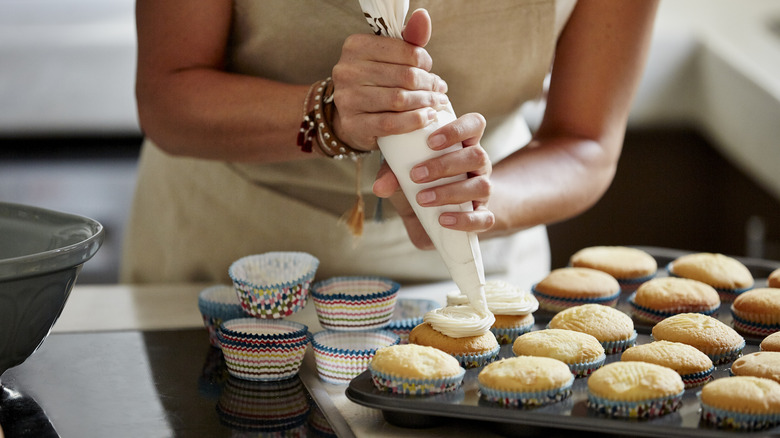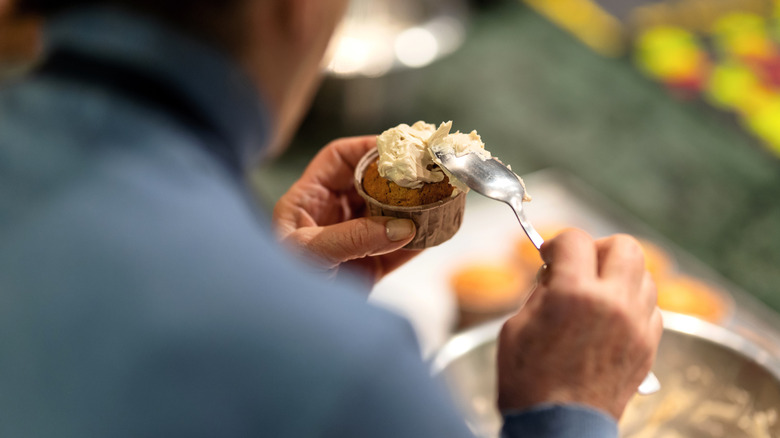The Unexpected Way Flour Can Revolutionize Homemade Frosting
If you're ready for something different to spread on top of cakes and bakes and want your frosting to stand out, it's time to try adding flour — not to your cake but to your icing. Flour frosting goes by a few names including milk frosting, boiled milk frosting, cooked flour frosting, or roux frosting, but ermine frosting is how it is likely to show up in a recipe. Ermine frosting is similar to buttercream with a distinctly silkier texture (hence the reference in the name) and easier than something that features egg whites, like a s'mores frosting recipe.
This egg-less mixture is a go-to for lovers of rich-tasting, simple-to-prepare frosting at home. Ermine frosting is made by combining flour, milk, sugar, and butter. For bakers familiar with the process of American buttercream (or quick buttercream frosting) or even the European versions (Italian, French, and Swiss, which are not the same), ermine buttercream is drastically less sweet. Why? Because you're using flour to add bulk things up, rather than just sugar, without sacrificing that perfectly silky mouthfeel.
The magic really is in the versatility of this frosting, which pairs perfectly with a range of cakes — from light and airy Chantilly cakes to a rich chocolate cake with a matcha dusting. Of course, vanilla is a classic complementary flavor when it comes to frosting, but there are a few other ways that ermine is traditionally used. Prior to cream cheese varieties, ermine was the original frosting choice for red velvet cake and its 19th-century precursor, mahogany cake.
How to make flour frosting and helpful baking tips
The best thing about this old-fashioned frosting is that it's ideal for spreading with a spatula if you're not quite accustomed to piping. Use the spatula to elegantly achieve swoops and swirls or simply smooth out the thickness over cupcakes and cakes. If you're already a pro at piping then the firm texture also makes it an easy swap.
However, it's possible that it may go slightly too soft, making it hard to work with or spread. If this ever happens, the easy resolution is to put the mixture in the refrigerator for about 20-30 minutes (or roughly 10 minutes in the freezer) to help solidify your frosting. Remember to re-whip it once you retrieve it from the fridge.
Ermine frosting, like other buttercreams, is a blank canvas; because it's lighter than other varieties, and not densely sugary or buttery, it takes to different flavors very well. Some think of it as tasting like a plain vanilla pudding in frosting form. To complement this subtle vanilla taste, opting for some coffee gives this frosting a boost. If you're a coffee lover, why not swap out the plain milk and pour in some coffee for a balance of sweet and bitter? If tea is more your jam, another alternative could be Earl Grey tea for a sweet citrus kick or rooibos tea for earthy overtones. For an added burst of color and fruitiness, powdered freeze-dried strawberries are the key to vibrant cakes and could be a huge hit. Think of it as an easy way to level up your cakes with some fruity frosting.


